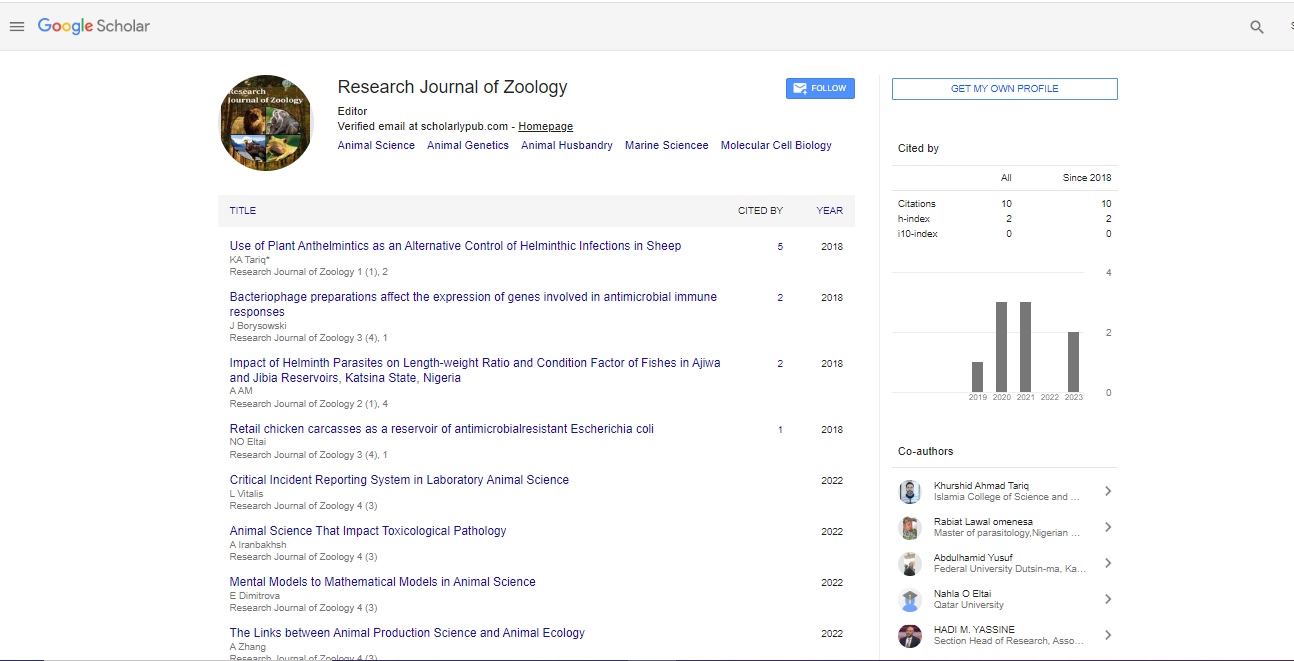Opinion Article, Res J Zool Vol: 5 Issue: 1
Aneuploidy and Euploidy: Genetic Variation in Chromosome Numbers
Jose Marina*
Department of Medical Microbiology and Immunology, Menoufia University, Menofia, Egypt
*Corresponding Author: Jose Marina
Department of Medical Microbiology and Immunology
Menoufia University, Menofia, Egypt
E-mail: simrinjalim12@gmail.com
Received date: 20-Feb-2023, Manuscript No. RJZ-23-95682;
Editor assigned date: 22-Feb-2023, PreQC No. RJZ-23-95682 (PQ);
Reviewed date: 09-Mar-2023, QC No. RJZ-23-95682;
Revised date: 16-Mar-2023, Manuscript No. RJZ-23-95682(R);
Published date: 23-Mar-2023, DOI: 10.4172/Rjz.1000079.
Citation: Marina J (2023) Aneuploidy and Euploidy: Genetic Variation in Chromosome Numbers. Res J Zool 5:1.
Description
Aneuploidy and euploidy are two types of genetic variations that occur in the number of chromosomes in an organism's cells. Chromosomes are the structures that carry an organism's genetic information in the form of DNA and any changes in their numbers can have significant impacts on an individual's health and development. Aneuploidy is a condition in which an organism's cells have an abnormal number of chromosomes. This can occur due to errors in chromosome segregation during cell division leading to cells with either too many or too few chromosomes. For example trisomy 21 also known as Down syndrome is a common form of aneuploidy in humans, where individuals have an extra copy of chromosome 21 resulting in a total of 47 chromosomes instead of the usual 46. Other examples of aneuploidy include Turner syndrome (45, X) where females have only one X chromosome instead of the usual two and Klinefelter syndrome (47,XXY) where males have an extra X chromosome.
The causes of aneuploidy can be varied. It can occur during the formation of eggs or sperm leading to the transmission of aneuploid embryos to the next generation. Aneuploidy can also occur in somatic cells which are cells that make up the body during development or later in life due to errors in DNA replication or cell division. Some risk factors for aneuploidy include advanced maternal age, exposure to certain environmental toxins, and genetic mutations that disrupt the normal processes of cell division. The implications of aneuploidy depend on the specific type and severity of the condition. In some cases aneuploidy can be lethal leading to early miscarriages or stillbirths. In other cases it can result in serious health conditions and developmental delays. For example individuals with Down syndrome may have intellectual disabilities, distinctive facial features and increased risk of certain health issues such as heart defects, hearing loss and thyroid problems. However it's important to note that individuals with aneuploidy can also lead fulfilling and meaningful lives with appropriate medical care, support and interventions. On the other hand euploidy is a condition in which an organism's cells have the correct number of chromosomes for its species. Humans for example are normally euploid with 46 chromosomes while other species may have different numbers of chromosomes. Euploidy can occur in two forms haploid and diploid. Haploid organisms have only one set of chromosomes, which is typical of gametes such as eggs and sperm while diploid organisms have two sets of chromosomes which is typical of most body cells.
Euploidy is essential for the proper functioning and development of an organism. During sexual reproduction haploid gametes fuse to form a diploid zygote which then develops into a multicellular organism with specialized cells and tissues. The balanced and precise number of chromosomes in euploid cells allows for the correct regulation of gene expression and proper cell division which are crucial for normal growth, development and reproduction. Euploidy can also have implications in medical and agricultural fields. In assisted reproductive technologies such as In Vitro Fertilization (IVF) euploidy testing can be performed on embryos to select those with the correct number of chromosomes for implantation reducing the risk of aneuploidy-related genetic disorders.
 Spanish
Spanish  Chinese
Chinese  Russian
Russian  German
German  French
French  Japanese
Japanese  Portuguese
Portuguese  Hindi
Hindi 
